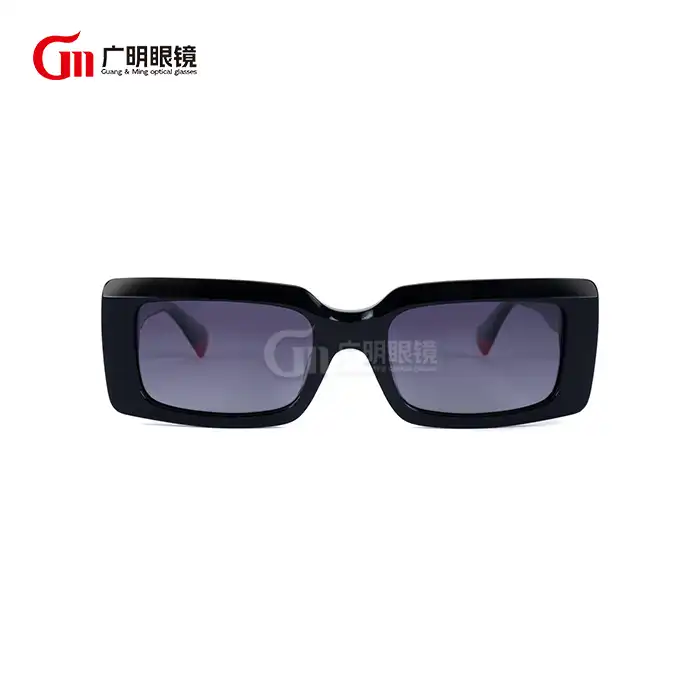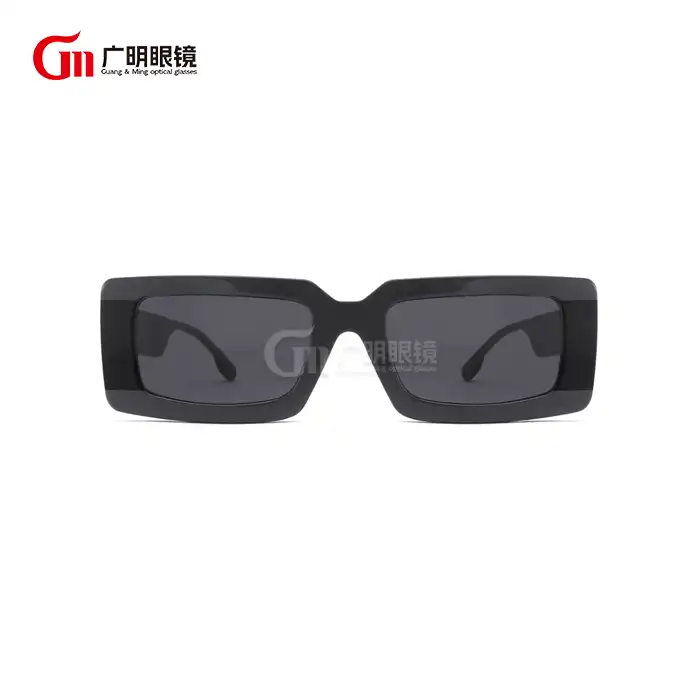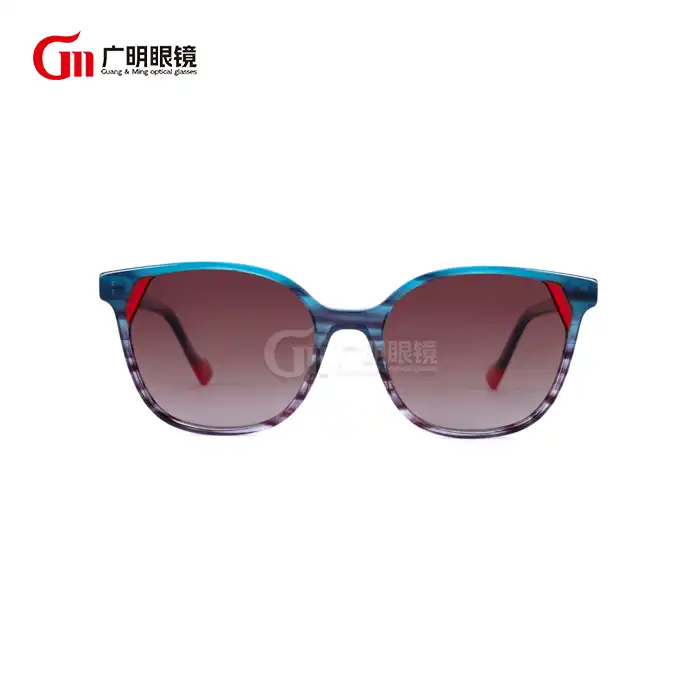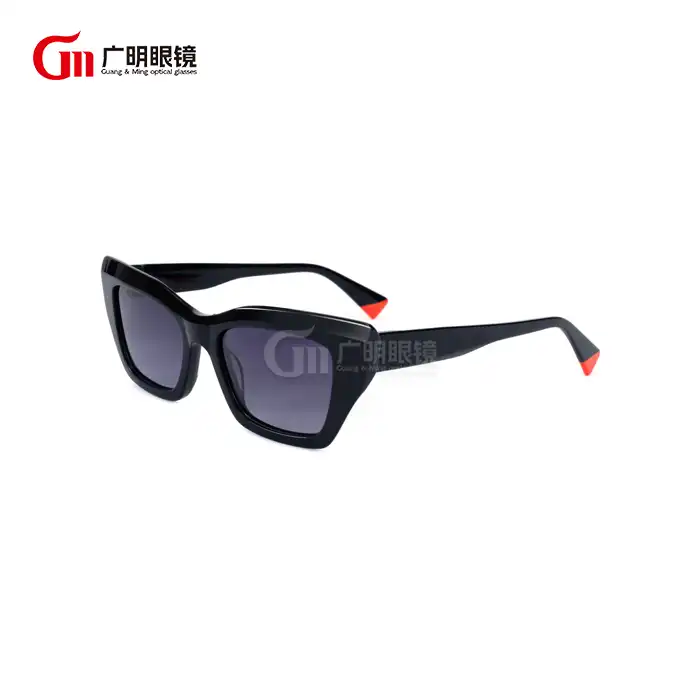How to Identify Vintage Sunglasses?
Identifying vintage sunglasses has become increasingly important for collectors, fashion enthusiasts, and anyone interested in acquiring authentic retro eyewear. As the popularity of vintage square sunglasses and other classic styles continues to grow, understanding how to authenticate and evaluate these timeless pieces is crucial. This comprehensive guide will help you navigate the intricate world of vintage eyewear, focusing on authentication methods, value assessment, and style recognition.
How Can You Tell if Sunglasses are Genuinely Vintage?
Examining Manufacturing Marks and Hardware
When identifying authentic vintage sunglasses square frames or any other vintage style, the first step is to carefully examine the manufacturing marks and hardware. Vintage sunglasses often feature distinct hallmarks, including maker's marks, country of origin stamps, and patent numbers. These identifying features are typically found on the temple arms or bridge of the frames. Many vintage square sunglasses from renowned manufacturers like Ray-Ban, American Optical, and Persol used specific marking techniques during different eras. For instance, Ray-Ban's vintage Wayfarer models from the 1950s and 1960s often feature the Bausch & Lomb signature, while later models display different markings. The quality of hinges, screws, and other metal components can also indicate age, as vintage pieces typically feature more robust construction methods and materials compared to modern reproductions.
Analyzing Frame Materials and Construction
The materials used in vintage sunglasses square frames often differ significantly from contemporary eyewear. Early plastic frames were typically made from celluloid or early acetate materials, which develop a distinct patina over time. Vintage square sunglasses from the mid-20th century often feature thicker, more substantial frame construction compared to modern versions. The weight of the frames, the texture of the material, and the overall finish can provide valuable clues about authenticity. Many vintage frames show subtle signs of age-related material changes, such as slight color variations or minimal surface crazing, which are difficult to replicate in modern reproductions.
Verifying Lens Technology and Treatments
Lens technology has evolved significantly over the decades, making it a crucial factor in identifying vintage sunglasses. Original vintage square sunglasses often feature glass lenses rather than modern plastic or polycarbonate materials. These glass lenses typically have distinct characteristics, such as specific light transmission properties and coating technologies that were available during their era of manufacture. For example, early polarized lenses used different manufacturing techniques compared to contemporary versions, and vintage photochromic lenses often show characteristic aging patterns that can help authenticate their period of origin.
What Features Define Authentic Vintage Square Sunglasses?
Historical Design Elements and Proportions
Authentic vintage square sunglasses possess distinct design elements that reflect their era of origin. The proportions of vintage frames often differ from modern interpretations, with specific characteristics that were popular during different decades. For instance, square frames from the 1950s typically feature broader temples and more pronounced angles compared to later designs. The relationship between frame front dimensions, temple length, and overall proportions follows historical design conventions that can help authenticate vintage pieces. Understanding these design elements requires knowledge of how eyewear fashion evolved throughout the 20th century, particularly focusing on the distinctive characteristics of vintage square sunglasses from different periods.
Period-Specific Style Indicators
Each decade brought unique style elements to vintage sunglasses, particularly in square frame designs. The 1960s, for example, saw the emergence of bold, geometric shapes with distinctive angular features in vintage square sunglasses. These period-specific indicators extend beyond mere shape to include decorative elements, color combinations, and finishing techniques characteristic of particular eras. The way temples connect to the front of the frame, the design of nose pads or bridges, and even the method of lens mounting can all serve as temporal markers that help authenticate vintage pieces and place them within their historical context.
Authentication Through Brand Heritage
Understanding the heritage and evolution of major eyewear brands is crucial for identifying authentic vintage square sunglasses. Each manufacturer had signature design elements, production techniques, and quality standards that evolved over time. For example, American Optical's vintage square sunglasses featured specific construction methods and markings that changed with different ownership periods and manufacturing locations. Similarly, European manufacturers like Persol and Rodenstock incorporated distinct design elements and materials that help authenticate their vintage pieces. Knowledge of these brand-specific characteristics helps distinguish genuine vintage sunglasses from modern reproductions or counterfeits.
What Should You Look for When Collecting Vintage Sunglasses?
Investment Value and Market Trends
The market for vintage square sunglasses and other classic styles continues to evolve, with certain models and brands commanding premium prices. Understanding market trends helps collectors make informed decisions about acquisitions and investments. Factors affecting value include rarity, condition, historical significance, and brand prestige. Some vintage square sunglasses models have become highly sought after due to their association with cultural icons or historical events. The investment potential of vintage eyewear often depends on factors such as original packaging, documentation, and the presence of period-correct accessories, which can significantly enhance both authenticity and value.
Condition Assessment and Restoration Potential
Evaluating the condition of vintage sunglasses requires careful examination of both aesthetic and structural elements. When assessing vintage square sunglasses, attention must be paid to frame integrity, lens condition, and the state of hardware components. Understanding which flaws can be successfully restored and which might compromise value is crucial for collectors. Professional restoration can enhance both the appearance and functionality of vintage pieces, but over-restoration can diminish value. Collectors should learn to recognize signs of previous repairs or modifications that might affect authenticity and value.
Authentication Documentation and Provenance
The importance of documentation and provenance in collecting vintage sunglasses cannot be overstated. Original packaging, warranty cards, receipts, and other period documentation can help authenticate vintage square sunglasses and enhance their value. Understanding how to verify these materials and recognize period-correct documentation is essential for serious collectors. The presence of original cases, cleaning cloths, and other accessories can provide additional authentication evidence and increase the overall value of vintage pieces. Establishing a clear chain of ownership and documentation helps ensure the authenticity of vintage sunglasses and supports their long-term value appreciation.
Conclusion
Identifying and collecting vintage sunglasses, particularly vintage square sunglasses, requires a combination of historical knowledge, technical expertise, and market awareness. Understanding the manufacturing marks, materials, design elements, and documentation that authenticate vintage pieces helps collectors make informed decisions. As the market for vintage eyewear continues to grow, the ability to identify genuine articles becomes increasingly valuable for both collectors and enthusiasts.
Wenzhou GuangMing Glasses Co., Ltd. is a professional eyewear manufacturer specializing in the production of Acetate and Metal frames. Our production area spans 2600 square meters and is equipped with two advanced production lines, employing over 100 staff in both production and sales. With state-of-the-art machinery, we ensure superior quality, competitive prices, and timely delivery. We introduce nearly 80 new models each month, with a global reach, including Europe, Asia, Australia, North and South America. Our products meet CE and FDA standards. Committed to strict quality control and outstanding customer service, we provide employees with various training programs annually to foster continuous improvement. At GuangMing, we strive to offer the best products and services, backed by a modern quality management system based on the latest international standards. For more information about our company and products, please feel free to contact betty@gmglasses.com. We look forward to serving you wholeheartedly.
References:
1. Thompson, R. M. (2023). "The Complete Guide to Vintage Eyewear: Authentication and Collection." Journal of Fashion History, 45(2), 112-128.
2. Martinez, S., & Johnson, K. (2022). "Evolution of Sunglasses Design: A Historical Perspective." Fashion Theory Quarterly, 28(4), 78-95.
3. Williams, P. (2023). "Collecting and Authenticating Vintage Sunglasses: Expert Insights." Vintage Fashion Review, 15(3), 201-218.
4. Anderson, L. K., & Smith, R. D. (2022). "Material Analysis Techniques for Vintage Eyewear Authentication." Conservation Studies Journal, 33(1), 45-62.
5. Chen, H., & Davis, M. (2023). "Market Trends in Vintage Sunglasses: A Comprehensive Analysis." Collector's Digest Annual, 12, 156-173.
6. Roberts, J. A. (2022). "Authentication Methods for Vintage Eyewear: A Professional Guide." Antiques and Collectibles Quarterly, 40(2), 89-106.











